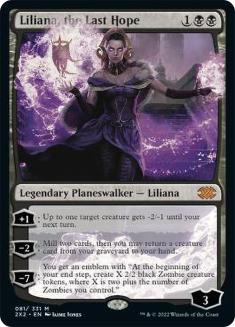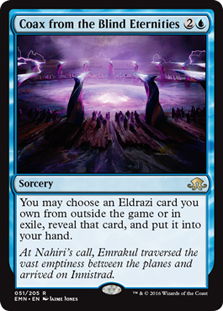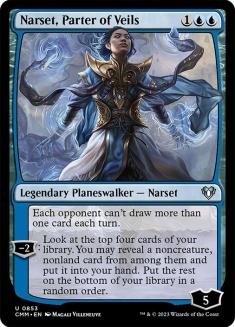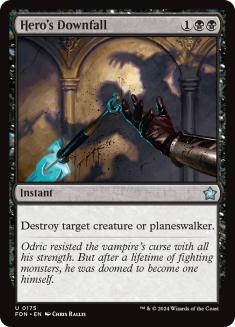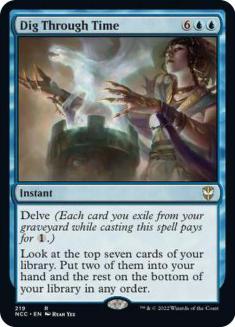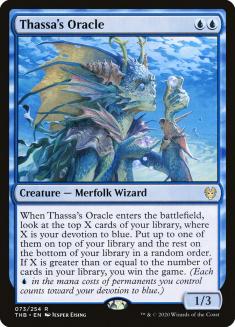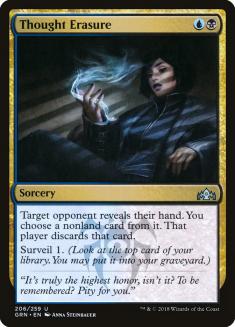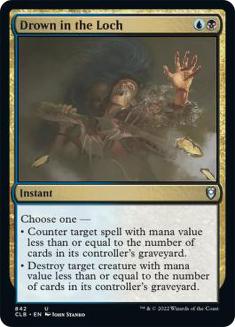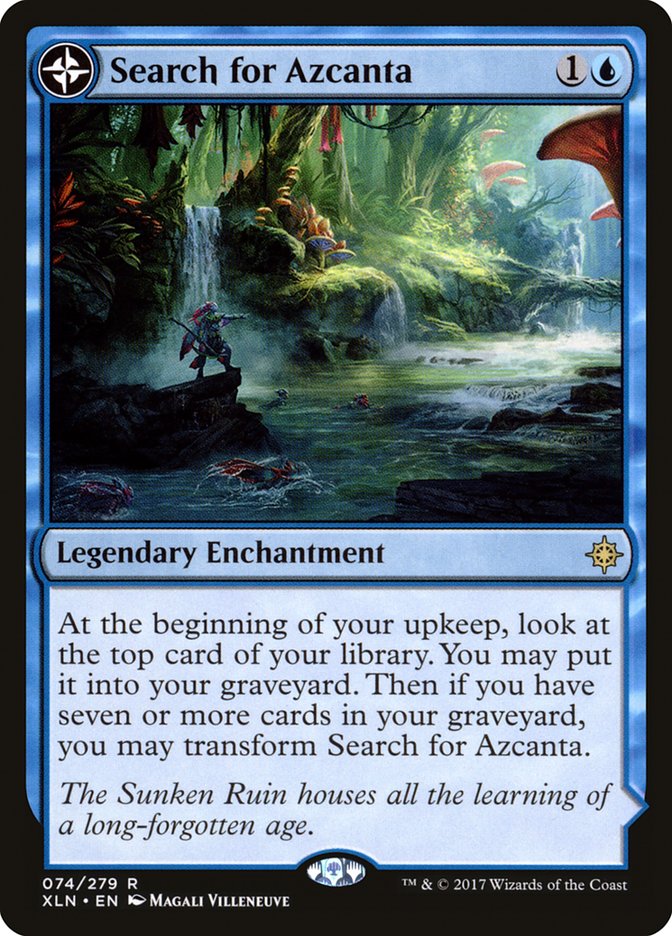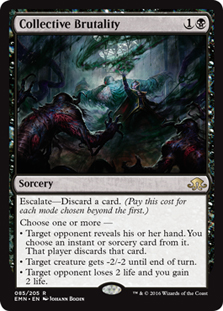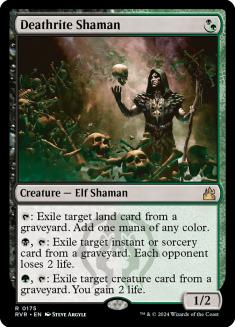Despite an ostensibly successful 10-6 finish at Players Tour Phoenix, my tournament was disappointing at a lot of key moments. I played Dimir Inverter in Pioneer and Dimir in both drafts, and despite loving my decklist, there were just a few missed chances, games that slipped out of reach despite what looked like a commanding advantage early on.
But I have a burning desire to keep playing Pioneer, at least as long as Inverter of Truth is a legal card. And, thanks to Underworld Breach taking some of the heat off the deck for a tournament, the chances that Inverter stays legal for at least a few months are significantly higher than they were a week ago! Corey Burkhart did end up winning the event with the deck, but the talk of the tournament was undoubtedly the Lotus Breach archetype.
Creatures (14)
Lands (24)
Spells (22)

Working with some of the brightest young minds in American Magic, Oliver Tiu, Oliver Tomajko, Max Mick, Noah Walker, Marcus Luong, and Roshen Eapen, we locked in Dimir Inverter and did not look back. My list for the tournament was (of course) unique, but used the same basic core. It was built with a few principles in mind, some specific to the open-decklist format of the Players Tour, and turned out pretty close to perfect. Going forward, this is a great base to work from:
Creatures (7)
Planeswalkers (6)
Lands (20)
Spells (27)

A few important notes for deck tuners and developers:
Pack Rat is significantly worse as a sideboard plan with open decklists. Your opponent will know that you’re playing with Pack Rat, and will generally be able to cover it with one to two copies of Legion’s End post-sideboard. I appreciate that it’s not going to get hit with a Mystical Dispute, but it’s going to end up looking silly if your opponent peels Dig Through Time into a Legion’s End. Better is Jace, Vryn’s Prodigy, which is excellent against control matchups, combo matchups, and Bant Spirits.
Liliana, the Last Hope is your ace in the hole against Bant Spirits. How does a deck with Rattlechains and Selfless Spirit beat this monster? It’s also solid against Mono-Black Aggro and any lingering Llanowar Elves decks that crop up, and the ultimate is a decent way to win games if you’re unable to combo for some reason.
Speaking of alternative ways to win, if you get your Inverters hit with an Unmoored Ego or an Infinite Obliteration, it’s often a disaster. Not so with a single Coax from the Blind Eternities in the sideboard. Far better than any sideboard plan revolving around The Scarab God or Ashiok, Nightmare Weaver, Coax is an easy one-of, and can be found with Dig Through Time and flashed back with Jace, Vryn’s Prodigy in case you mill it. Lotus Breach, mirror matches, Sultai Delirium, and Mono-Black Aggro are all capable of bringing the pain with an Extraction effect and this is the smallest possible sideboard package to protect yourself against being cheesed out.
Notice how we’re often mentioning small numbers of cards with the logic that “They can be found with Dig Through Time?” Narset, Parter of Veils is Dig Through Time five and six. It also shuts off opposing copies of Jace, Wielder of Mysteries in the mirror match, which is absolutely critical. Jace is the centerpiece in the mirror match for two reasons. First, in a matchup where there are few creatures around to attack it down, it’s an extra card every turn. Second, it threatens opponents who try to combo off with Inverter of Truth by allowing you to mill them out if their library has few enough cards in it. Its presence on the battlefield is a major constraint to opponents, and it’s really difficult to remove. Obviously Dig Through Time is the most overtly broken card in the deck, but Jace is the scariest one when it goes unanswered.
Incidentally, Narset and two maindeck Hero’s Downfalls were my concessions to the power of Jace in the deck. Downfall is the only maindeckable answer to opposing Jaces, while also answering opposing copies of the popular hate card Gideon of the Trials. Note that without Hero’s Downfall, a Gideon of the Trials with an emblem is practically unbeatable, as you’d need two Inverters on the battlefield to attack the planeswalker down.
With four maindeck answers to enemy Jaces and four copies of our own, this list is never going to get outflanked in the Jace war. And with a virtual six Dig Through Times as opposed to the standard four, we are also far more likely to churn card selection in the late-game and find any single spell we need.
The concession here is the aggro matchup, because there are only three maindeck copies of Thassa’s Oracle. If control and combo start to dominate Pioneer, this will become the standard, but in a format where Mono-Red Aggro and Mono-Black Aggro are premier decks, it’s important to play four copies of the card. My metagame read was such that I expected to need the extra percentage against the non-aggro decks, which ended up being more correct than not.
Additionally, three-of Thought Erasure is a critical piece of supplemental disruption for opposing combo and control decks, and surprisingly plays well against the Torbran, Thane of Red Fell red decks. In theory it punches a hole through which you can jam a planeswalker or a Dig Through Time, and fills the graveyard to enable said Dig Through Time. It’s worth at least two slots, but in a metagame dominated by mirrors and Lotus Field, it’s fine to play three or even four copies.
Drown in the Loch, though, is a contentious card. Even competent players love to use hyperbole to describe it as everything from “textless garbage” to “flexible and playable,” but no one admits how critical it is as coverage for both Lotus Breach and the aggro decks, while offering the critical ability to lock out a mirror match opponent in the late-game.
Yes, of course it gets embarrassed against Dig Through Time and Uro, Titan of Nature’s Wrath. However, it also counters Spell Queller, Shrapnel Blast, and Underworld Breach, and kills Soul-Scar Mage or Knight of the Ebon Legion with equal ease. Most Bant Spirits opponents will not bring in graveyard hate like Rest in Peace against you (for good reason, as spending a card against a Thoughtseize deck that isn’t totally graveyard-reliant in a way that doesn’t impact the battlefield is silly) and you’ll be able to use Drown well against that too. It’s just good honest double-coverage in a deck that needs some mid-game countermagic to protect itself from the other powerful things going on in Pioneer.
On the other hand, Mystical Dispute, despite its clear high power level, is not actually a mandatory four-of. Most players see a card like Dispute and rush to play it, but patient opponents will often know that you have it and put you in awkward spots. Every time I run out a Thoughtseize and see an opponent with a Mystical Dispute, I look for an opportunity to cast a Dig Through Time with three mana untapped. It becomes a small subgame, minimizing the impact of this card by letting the game develop.
Additionally, against Lotus Field, the card is shameful. Once an opponent has a Lotus Field on the battlefield, Mystical Dispute actually has no text. Enough about Drown in the Loch being weak against Dig Through Time; Mystical Dispute goes dead against the two best decks in the format way, way more often. Two copies in the sideboard is more than enough at the moment.
So if Dispute is being overrated right now and Drown in the Loch is being underrated, what else are we missing with stock builds of Dimir Inverter?
The manabase is clean, though it should likely drop a land for some more velocity cards. At the very least, four Fetid Pools is probably correct. This deck floods out like nobody’s business once Jace gets going. It also has no problem working on short mana, and can use cheap interaction spells to stay afloat while setting up Dig Through Time. In contemporary Magic more than ever, screw beats flood, and if we’re looking to set up a quick combo in Game 1 while being less likely to flood out as we slow down later in games, we will need to alter the mix of lands and spells here.
This phenomenon happened twice before in recent memory, with two decks that did later see cards banned: Four-Color Saheeli and Temur Energy. Both decks were incredibly powerful, but both had a secret issue with flooding out in long games. The solution for Saheeli involved a convoluted decklist that incorporated Traverse the Ulvenwald, Walking Ballista, and a mere nineteen lands, and the solution for Temur Energy involved branching out into a fourth color and playing powerhouses like The Scarab God as late-game sledgehammers.
Both decks did get hit with bans before evolving to perfected final forms, and if Wizards of the Coast (WotC) gives us a little bit of time to figure out the format, I suspect that we haven’t seen the best that Inverter has to offer. One solution is to stay straight two-color and get a little bit radical in deck construction, breaking a few rules:
Creatures (7)
Planeswalkers (6)
Lands (19)
Spells (28)

Yes, that is a 23-land deck. It’s okay. We’re trying something new. By leveraging more cheap cantrips, we are justified in shaving lands, and we are all the more likely to draw action spells in the mid-game. Our card selection, already top-notch, gets even better with the addition of Omen of the Sea (though I’m still not certain that we should be playing Omen over, say, Discovery // Dispersal or Strategic Planning). Discovery, in particular, has a great additional mode for fighting opposing planeswalkers, but it’s possible that sorcery speed on the front half is too great a drawback.
I also have more than a little bit of interest in Search for Azcanta as a half-Dig Through Time, half-Sky Diamond, despite others’ reservations about the card. It may end up being worth a copy as pseudo-land number 24 or 25. What can I say? I love Dig Through Time and Narset, Parter of Veils so much, I just have to play even more copies of that effect!
Collective Brutality is the other one on my shortlist to include in the deck, likely replacing Essence Extraction or possibly supplementing the maindeck Thought Erasures. To be fair, Extraction is in the deck more because it can kill Spell Queller than anything else. (Notice Dimir Charm as a weird one-of that can kill Spell Queller and hit Lotus Breach’s powerful sorceries?)
Brutality is extra-nice because it plays well against the Pack Rat plan in the mirror match while not being dead if the opponent does not have Pack Rat. It still nabs all types of interaction spells and Digs. Add to that its utility against other combo decks and Mono-Red Aggro, and you have a winning card.
Of course, we’re set up well to fight the biggest boogeymen of the format in the mirror match and Lotus Breach. Without open decklists, it’s less appealing to have an Extraction effect in our sideboard, though it’s still a fine inclusion in our deck with so much card selection. I went with Infinite Obliteration at the PT because it doesn’t get hit by Mystical Dispute and doesn’t let the opponent draw cards if it snags a creature in their hand, but Unmoored Ego and Lost Legacy each have their appeal.
Clearly, there’s still lots of room left to improve current Dimir Inverter decks, assuming WotC doesn’t drop a premature ban. But there’s another route.
The other solution is to play Sultai Inverter, which combines the best of Sultai Delirium with Dimir Inverter, grafting the powerful Uro, Titan of Nature’s Wrath on top of card selection spells like Grisly Salvage. Blending two powerful decks is often a shortcut to breaking a format, and Uro is busted in its own right. It also basically kills the need to play around a single extraction effect on its own, offering a massive recursive body and awesome card draw in one card.
This is way more open to experimentation, but a starting point might look something like the following, based on Charles Wong‘s, Andrejs Prost’s, and others’ lists from the Players Tour event this weekend:
Creatures (19)
- 2 Deathrite Shaman
- 2 Sylvan Caryatid
- 4 Satyr Wayfinder
- 4 Inverter of Truth
- 4 Uro, Titan of Nature's Wrath
- 3 Thassa's Oracle
Planeswalkers (3)
Lands (21)
Spells (17)

Deathrite Shaman is ready to come back and put in work! Remember, that creature was banned in Modern and Legacy. Pioneer has to be next on the list, right?
In all seriousness, there’s a rich vein of deckbuilding material to be mined and refined here with Inverter of Truth, multiple sub-archetypes and multiple ways to build each one. It’s not going to be done in a day, but this is where Pioneer is truly breakable. Sure, Lotus Field and Underworld Breach won the weekend in Phoenix, but Inverter has the tools to compete through any metagame and varied hate cards.
It is the future of deck tuning for the upcoming weeks in Pioneer.



